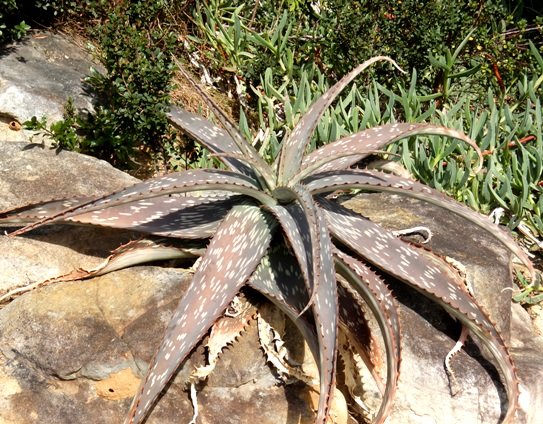Aloe greenii

Author: Ivan Lätti
Photographer: Thabo Maphisa
Aloe greenii, one of the many spotted aloes of South Africa, is mostly stemless and forms clumps from spreading suckers. A rosette comprises on average 20 lanceolate leaves. The leaves become about 50 cm long and 8 cm wide at the base. The usually oblong white spots join on the blades, becoming wavy transversal bands. The botanical name may be changing or has changed to A. viridiana.
Usually bright green, the leaves of this plant have gone purple, finding its rock garden conditions a tad challenging at the end of a hot dry season, probably having had more sun than it relishes.
The species distribution is in north-eastern KwaZulu-Natal and southern Mozambique.
The habitat is medium to low altitude flats where warm, high rainfall and frost-free conditions prevail. The plants thrive in shade among trees and shrubs, best in well-drained sandy soil. The species is not considered threatened in habitat early in the twenty first century (Van Wyk and Smith, 2003; Reynolds, 1974; Jeppe, 1969; iNaturalist; www.redlist.sanbi.org).

